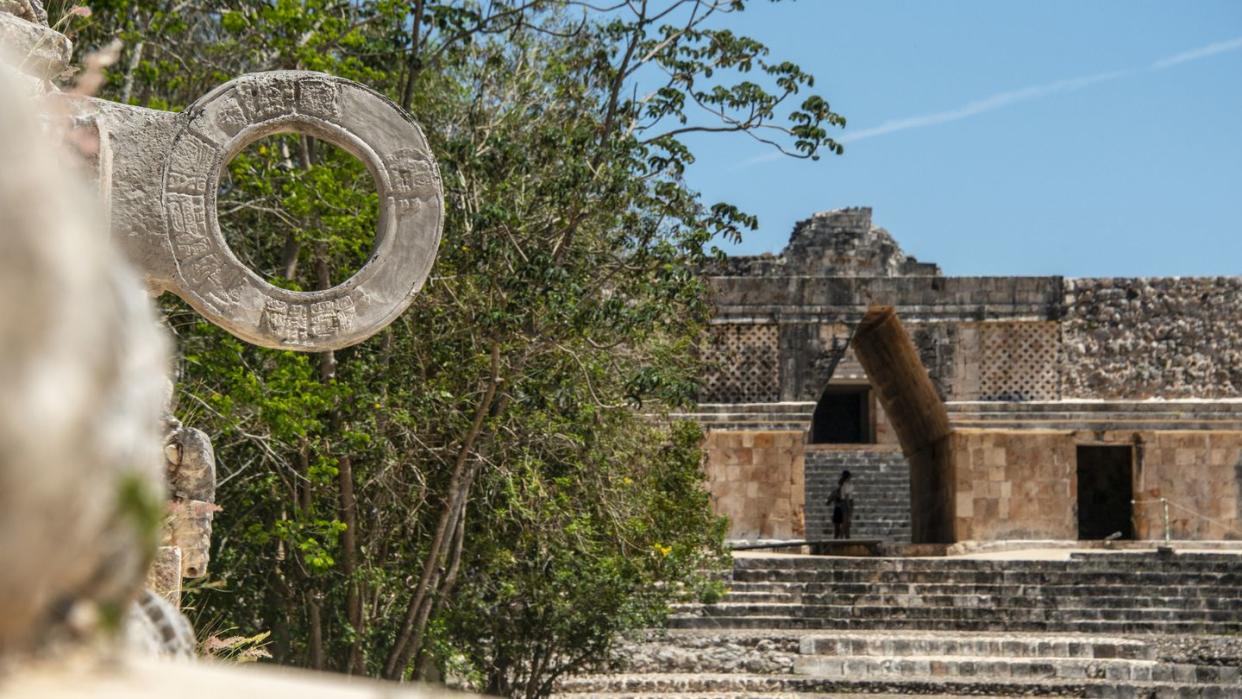Archaeologists Found the Lost Remnants of a Maya Civilization Hiding in the Jungle

Archaeologists scanning through jungle terrain stumbled on what could have once been an important Maya location.
The team discovered a mysterious structure built under a ball court, popular in large Maya cities, as well as other sites with pyramids and evidence of drainage systems.
Most of the findings point toward a period of time stretching from 200 AD to 1000 AD.
The height of the Maya kingdom, which stretched from 250 to 900 AD, included the rise of the Maya Ballgame, sometimes called pitz, and its ball court structures in the center of major cities. The courts were a symbol of wealth and power to the Maya people, hence their prime placement.
Not only did archaeologists recently discover one of these courts in a Mexican jungle, but they also uncovered a cryptic construction under the court, leading to questions about its use.
Archaeologists from the Research Center of the Slovenian Academy of Sciences and Arts, working under the Mexican Archeology Council of the National Institute of Anthropology and History, were exploring light detection and ranging (lidar) readings when they noticed unique shapes in a roughly 54-square-mile section of the Balam Ku Biosphere Reserve. The team located the shapes in the unpopulated area of the Mexican state Campeche and found they were actually modest-sized settlements with a few larger buildings, practically no standing walls, and no key architectural decoration.
“The inevitable impression is that the Maya culture of this region that we have just explored was notably less elaborate than in the Peten to the south and the Chase and Chactun regions to the north and east,” Ivan Šprajc, an archaeologist at the Institute of Anthropological and Spatial Studies in Slovenia and director of the excavation said in a translated statement.
It was all so mundane. Then something piqued the archaeologists’ interest.
While excavating the ball court, the team discovered that underneath the court were parts of a building covered with remnants of painted stucco. Because ball courts were typically built at the center of major cities, it stands to reason that the building found underneath the court in Campeche must have had some prominence as well. But speculation will have to suffice for now.
“Only further excavations may reveal the shape of that underlying building and what its function was,” Šprajc says, according to Live Science. He estimates the building dates back to somewhere between 200 and 600 AD.
The subterranean building wasn’t the only find in the area. The team made two other major finds in central Campeche. The first is a main plaza, surrounded with elongated structures, that features a pyramid and a drainage channel.
The size of the nearby structures leads the team to believe the site was occupied during the Late and Terminal Classic periods from 600 to 1000 AD.
The other major discovery is a site with a 52-foot-tall pyramid near a water reservoir, complete with the remains of offerings at the top of the structure. The archaeologists found ceramic fragments, a flint point, and an animal leg—likely an armadillo or large rodent—on top of the pyramid. The archaeologists believe the find may tie to the Late Postclassic period from 1250 to 1524 AD and shows the presence of humans in the area remained constant even after the height of the Maya civilization and before the arrival of the Spanish.
“The offering indicates that even after most of the Classic period Maya settlements had been abandoned, small and impoverished human group(s) were still rambling around, putting offers on or near the buildings of their forebears,” Šprajc told Live Science.
You Might Also Like

